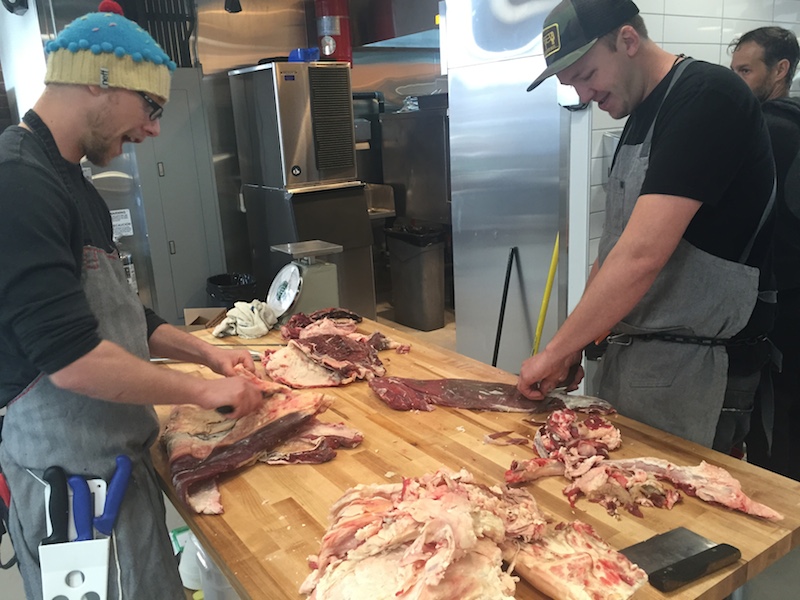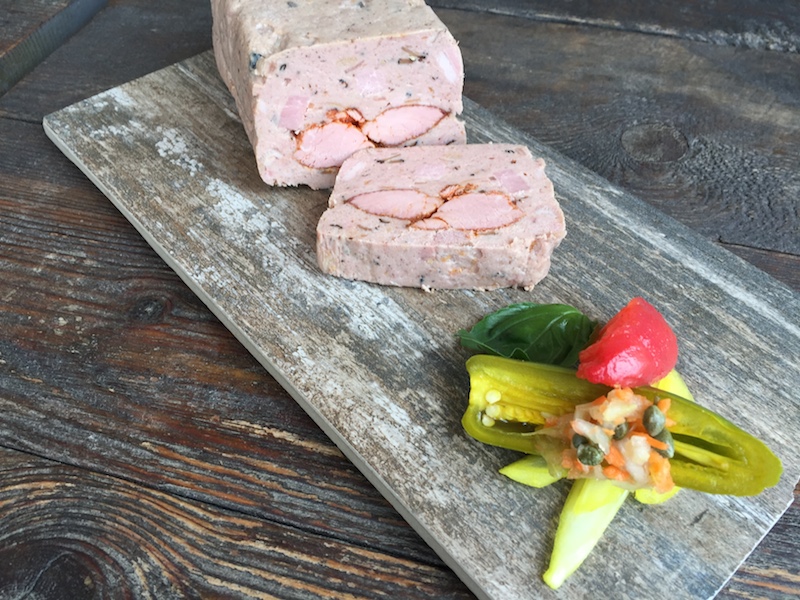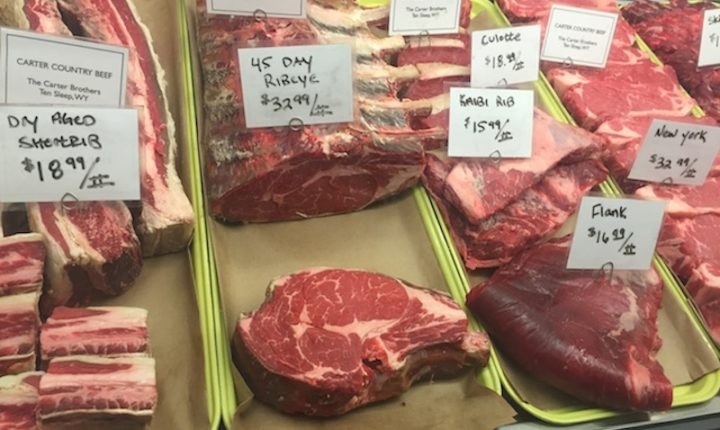Look at you, just standing there, staring at it…not having any idea what to do with it or even how to handle it. Good thing you stumbled upon this article on how to choose and handle your meat—you know, like pork, beef, lamb, etc.
Summer is upon us, which means grilling season is in full force—yay! And what goes better on a grill than a big fat steak or sausage? Nothing! You can almost hear the sizzle of the hot grill searing the tastiness into the steak, the waft of a properly seasoned ribeye as Bob Marley plays in the background, and the ice cold beer or bourbon blackberry smash (c’mon, I am the Bourbon Girl, after all!) in your hand screams summer.

But all of that will mean nothing if you buy a crappy piece of meat. Your run of the mill grocery store isn’t going to cut it here. Seek out a good source for your meat needs, like a great butcher, which is what I did. I got to pick the awesomely knowledgeable butcher Nate Singer at Blackbelly Market in Boulder, Colorado. Nate has studied butchery in three different styles: USDA, Italian, and Spanish. To say he knows a lot about butchery and how to choose a great cut is an understatement.

The difference between the types of butchery is that the USDA method is done with saws and cutting through the bone. Italian butchering is done with a knife and a hand saw, taking the animal apart muscle by muscle, and Spanish butchering is about curing the animal. The Spanish break down the animal muscle by muscle as well. The biggest difference between Italian and Spanish butchery is how it is cured. Italy works more with whole muscle curing and the Spanish are more about the jamon (ham). They use the pig for different sausages and salamis and try to preserve the pig for a whole year. Remember, Italy and Spain are a lot older than the United States and their butchery started with preservation for the Europeans.
Good places to buy your meat are butcher shops or specialty markets. Costco will do, but a large grocery store is probably the worst place to buy it.
According to Nate, the most popular cuts are the middle cuts. Think ribeyes, NY Strips, tenderloins, and sirloins as well as secondary cuts like flat iron steak. Personally, I love a good hanger steak but they are hard to find because there is only one per animal and most restaurants scoop those up. But, a good butcher will be able to get them for you.

When choosing your beef or lamb, look at the color of the meat. If there is a microfilm or slime on it, pass. If the fat is solid, not so good. The color should be bright red if it’s fresh; if it’s dry aged, it will have a little gray to the color.
You’ve bought your meat and if you’re not going to cook it right away, it’s best to put it in a Foodsaver-type bag that will extract all of the air out of the bag.
With ribeyes costing around $30/pound, there are some great options that aren’t as pricey but equally as flavorful. At Blackbelly Market you can get a Denver or a bavette steak and it will run you between $16-$18/pound. When you are cooking your meat, it’s best to take it out of the refrigerator 15 minutes before you cook it and salt it while it is raw for best flavor.
Buying meat at a butcher shop is going to be more expensive than if you buy it at the grocery store or a warehouse store, but the quality of what you will get is worth it. Besides, you won’t need to buy as much because the flavor and texture is far superior.

If you want an education in different cuts of meat, how to buy them and find superior quality, head over to Blackbelly Market and ask for Nate. My entire interview with him was filled with amazing information. Let him guide you on what to buy and try some new cuts. He will also tell you where they source their meat—it’s all sustainably raised and Nate knows all of the ranchers personally.
You can find Nate at Blackbelly Market at 1606 Conestoga St #3, Boulder, CO 80301.
Related Posts
« Leaky Gut Could Be What Ails You 9 Business Tools Learned from Mountain Biking »









